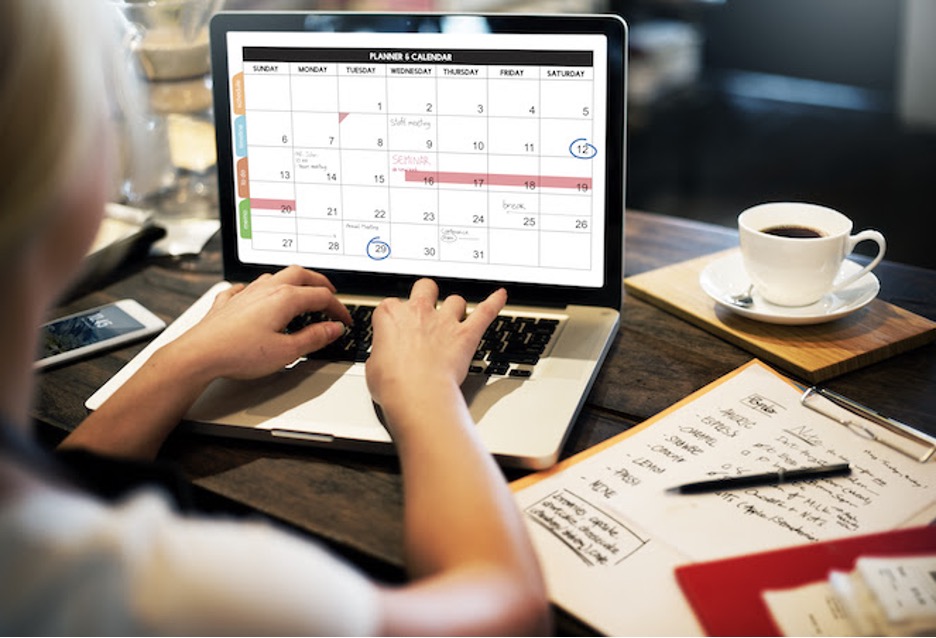We’ve heard it all before when it comes to self-improvement. Read, try, or watch this, change jobs, start exercising, etc. We attempt to set worthwhile goals for ourselves. We take the time to establish what we wish to accomplish, then life happens, and we forget what we wanted to improve upon in the first place. We lose our goal sheet, or the dog, child, or Netflix eats it.
Self-improvement is an enormously good idea, but sometimes it gets lost in the day-to-day shuffle of family, work, and community. It takes discipline and commitment to make plans that stick.
The following suggestion may sound backward but trust me.
Two things must happen before self-improvement can work. First, you need to craft an accountability plan detailing how you will commit to the goals you set for yourself.
Second, you need to get yourself in a position to think freely, creatively, and confidently about potential goals towards self-improvement.
Make an accountability plan.
It may seem weird to envision how to be accountable with the plan prior to the plan being set forth. But doing it this way eliminates any preconceived doubt or fear that you won’t, or can’t, accomplish the goals in the first place. There is no pressure at this point. This is a simple plan on how you’re going to hold yourself accountable. At this point you can be honest with yourself and contemplate free of any limitations you think might cause you to think something is unattainable. This part is important.
Below are some tips to help you make the self-improvement plan stick.
Keep goals in front of you
You put the time in. You really concentrate and come up with some great self-improvement goals, and then . . . you file them or put them in a drawer (or put them on your desktop) and they never come out again. As time goes on you forget about them until someone, or something reminds you to revisit self-improvement.
Instead of putting them “away,” post them in places where they will be in your daily view often. Stick them on the bathroom mirror, the back of your laptop, or on an office wall near your desk. Allow them to be a gentle reminder of the goals you’ve established for yourself.
Choose a check-in day
For some people, choosing a specific day of the week, or month, to review their goals works better than viewing them every day. Setting aside this time serves as an easy-to-follow routine, just like coffee in the morning.
However, when you choose the day, don’t overschedule yourself to miss your time. Schedule it like you would a meeting and share it on your calendar.
Set up a reward system
Have you ever scheduled me-time and then it came and went because something “more important” came up? Do what’s necessary to not skip this opportunity. It’s your time. This is easier said than done when you have a busy schedule. But here are some suggestions that might work for you.
- Set aside a time for your favorite coffee or tea shop to work on your goals.
- Leave the office and go somewhere outside to sit or walk while you work.
- Do it the same time of day every time you review.
- Go shopping afterwards or give yourself some other reward that matters to you.
- After you review your goals and adjust, take the rest of the day off.

Make it an event
Another trick to help with the staying power is to turn it into something you really look forward to. Many leaders are working long hours, multi-tasking with so many hats that any life after work seems out of reach. Others are busy chasing after children in school and in sports, only to return afterward to some necessary work project that is due the next day. Many folks are extremely busy, and it’s difficult to keep this on the calendar.
However, if you make it an event, it has a higher chance of sticking. For example, when setting up a haircut or a massage, put the date on the calendar and then hit repeat for the year. The same day, same time, and it’s something you have to go to. In other words, you just can’t do it at your desk. Tying it to something you look forward to is the key. It’s your event.
Accountability Partner
Find a friend or mentor that you respect. Talk with them about your goals, and set a monthly, quarterly, or annual meeting to discuss progress, barriers, speedbumps, and successes – small or large. Having another person and a meeting on the calendar will help keep you on task.
Want it
Let’s face it, we all have grandiose desires and dreams, but sometimes they stay right where we left them—in our minds.
If you truly want something, you usually do whatever it takes. Think about it. You fight for your kids, family, and your business. Why not fight for yourself? It will be worth it.
The only way to continue to improve is to continue to change. Change, learn, recalibrate, change, learn, recalibrate. You’ve got this!
Now that you have created a plan for the accountability piece, the next step is to create your own personal pathway for improvement.
Set the path forward
There are a plethora of ways to indulge in self-improvement. How do you know what you need the most? How can you choose items to work on in the face of all your challenges?
Here are some tips to help unleash ideas to come up with your goals.
Attend to your core
Like a tree whose trunk assumes most of the heavy lifting, sustaining high-velocity winds and other environmental elements, your core does the same for you. I don’t necessarily mean your physical core, although, for some, that could be one of the goals. I’m talking about your inner core. What excites you? What ignites your passion?
Are you finding ways to feed your soul? If not, no improvement plan will work. When you think of improving something, it might help to start there.
Your core is your why. Your core is your values, plural. Knowing the makeup of your core and how it can weather storms is critical to initiating a plan of action toward improvement.
What do you need today and how can you make it happen? What adjustments can you make today to help you clean up or strengthen your core?
Write it down. It’s your base.
Boost your creativity
Many people say they aren’t creative enough to come up with an improvement plan. But there are some small things you can do to get the creative juices going such as moving to another location, walking in nature, going for a run, moving the office furniture around, dancing, or even doodling. Being creative in other ways can help expand your self-awareness and formulate new ways or new areas you desire to improve upon.

Take a breath
It’s not rocket science, but we often forget to take a break once in a while and it’s difficult to be creative when you are stressed. No surprise, but it’s harder to think about yourself when you are scurrying around the office, the home, the grocery store, or the athletic field watching your children. Minutes go by and those minutes turn into days.
Sometimes you just need to stop and breathe. Even a minute or two a day will make a significant difference. Try it now! Just stop. Take four BIG breaths. Seriously, try it now.
Feel better? It’s amazing how well it works to reset the nervous system. It’s an easy thing to do, then gather yourself and pick up where you left off.
Get active and keep moving
Movement is always good. Being active and healthy invigorates the mind and body. Moving helps your mind stay fresh and you can gain understanding and self-awareness. An active lifestyle helps you stay focused, stimulated, and ready to attack new challenges, especially those you set for yourself in the way of improvement.
For some people, improvement evaluations happen on runs, jogs, biking trips, or walks. Physical fitness is a no-brainer for physical health, but it also invigorates your mental health, allowing you to feel good and objectively look at life from a fresh viewpoint.
Stop and smell the confidence
Confidence is a big issue when thinking about self-improvement. Many see themselves or have been told by others that they aren’t good enough. Or they see how others are being successful on Facebook or LinkedIn and wonder, “why aren’t I getting that [job, promotion, project, award . . . ]?”
Negative isms are all around us every day, even at times bubbling from within. We all have doubts about something working out or about how we are performing. We all have fears and anxieties. We all have some imposter syndrome. It’s a normal component of getting out of our comfort zone.
When these thoughts creep into our existence, the best thing to do is to acknowledge them and, if possible, send them on their way. They are distractors. Do you know what your distractors are? Being aware of them gives them less power.
When confidence becomes an issue, stop thinking about goals and instead, do something you are good at and that you enjoy. Build your confidence back. What brings you joy? What are you good at?
Get your confidence in a place where your next goal or challenge feels doable as opposed to something you don’t think you can accomplish.
Try little things first
“If one advances confidently in the direction of his dreams, and endeavors to live the life which he has imagined, he will meet with a success unexpected in common hours. ~ Henry David Thoreau
Start small and build from there. What is it you need right now? More time off? More, or less, time with children? More time to work on you?
Pick one thing and work on it first. Hold yourself to it with your accountability plan and with the awareness to be in the right mindset. Build your success one little thing at a time.
Today is all that matters. On the next check-in date, you can evaluate, learn, recalibrate, then work on the next step towards self-improvement.

Reach out when you need help
Lastly, it has been a rather tough few years now with the pandemic and all the changes and adjustments that have had to occur as a result. Allow yourself permission to reach out when you need help. Don’t think you have to carry the load yourself. We are human beings who are also social beings, and we need each other.
Bring your family, mentors, colleagues, or other professionals into the picture and ask for help when you need it. There is no shame in this. No amount of self-improvement will work or stick if you feel in a place of helplessness or hopelessness.
Once you have implemented a plan of action and have installed the guardrails to stick with it, then your path forward becomes more realistic and reachable. When you’ve done the personal work to have a clear, creative, and confident mindset, your self-improvement plan will surely work to drive you forward.
Be strong in this effort. Your family, business, community, and your own self depend on it.
Goals, Mental Health, Motivation
